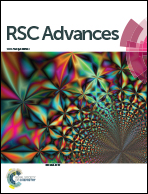A tensiometric study of magnetorheological suspensions' stability
Abstract
A thin (3-aminopropyl)triethoxysilane (3APTS) layer with a grafting density around 50 groups per nm2 was coated onto soft magnetic carbonyl iron (CI) particles. Their physical characteristics were examined using various methods, and the results revealed that the coating layer did not affect the particles' morphology and magnetic properties while their resistance against thermal oxidation and chemical degradation was considerably improved. This study further evaluates the surface free energy of the particles under investigation using tensiometry, namely capillary rise experimental methods based on the Washburn theory. The dispersive and polar components of surface free energy were subsequently computed through the application of the Owens–Wendt–Rabel–Kaeble theory. It was observed that the coating of CI particles with 3APTS increased the dispersive component of surface free energy, resulting in the improved compatibility of such particles with non-polar silicone oil which is used as a carrier liquid for magnetorheological (MR) suspensions. Furthermore, the 3APTS coating has a negligible influence on MR properties in comparison with an uncoated CI particle-based MR suspension, as was proved by steady shear and small-strain oscillatory shear tests under various external magnetic fields. The improved compatibility of 3APTS-coated CI particles with silicone oil was reflected in the better sedimentation stability of the MR suspension, observed via tensiometry for the first time for MR suspensions, in comparison with the uncoated CI particle-based suspension.


 Please wait while we load your content...
Please wait while we load your content...